Green architecture – 2012 New American Home
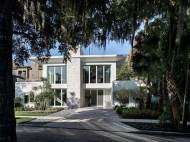 The New American Home (TNAH) has a tradition of Now in its 29th years where a showcase home is constructed in cooperation with the NAHB International Builders’ Show to exhibit innovative building technologies and the latest building products. This year’s New American Home represents a re-interpretation of the Classic White Box of the 60′s and 70′s that was made popular by architects and artists such as Le Corbusier and Richard Meier.
The New American Home (TNAH) has a tradition of Now in its 29th years where a showcase home is constructed in cooperation with the NAHB International Builders’ Show to exhibit innovative building technologies and the latest building products. This year’s New American Home represents a re-interpretation of the Classic White Box of the 60′s and 70′s that was made popular by architects and artists such as Le Corbusier and Richard Meier.
Designed by Phil Kean Designs, the 380-square-meter (4,100-square-foot) 2012 New American Home is designed to appeal an empty nester, but it has four additional rooms that could be converted to bedrooms if needed. Although we usually leave our remarks about projects for the end of our articles, this time I felt the urge to point one earlier. Despite the fact that New American Home has the tendency to lower its size, it is still way too large to appeal even the population with higher than average income so you’ll have to think about it as a showcase home rather than as an idea of affordable and efficient home.
The second floor of the house is accessible by public stairs or private elevator and it is occupied with two bedrooms, a master suite with private workout studio, outdoor yoga deck, private sitting room, and spa-like master bath. The guest suite is located on the main floor with an en-suite bath. Among additional public spaces, the house features an art gallery with cathedral ceiling, an artist studio, three-second floor decks, and a lower level patio covered connecting to the pool and summer kitchen.
The large window surface area provides abundance of natural lighting and the modularity of the house – which is comprised of walls of movable glass panels and motorized screens – provide a flow between indoor and outdoor spaces, and create a comfortable and serene living environment. The home uses both exterior solar screens and interior privacy shades which can automatically adapt to the time of day and weather conditions to minimize solar gain and maximize natural light.
2012 TNAH achieves is expected to consume 52 percent less energy than a standard home. At this level of efficiency and current prices, the home is designed to provide a bit over $1,500 in annual energy savings. Overall, the home uses approximately 77 percent less energy for heating and 83 percent less energy for cooling compared to a similar home in the same (hot-humid) climate zone. The 4KW Photovoltaic (PV) system provides approximately 18 percent of the annual energy needs for home’s electrical systems, space conditioning and hot water systems.
Spray foam insulation was used on the underside of the roof deck, as well as around any penetrations, and framing to prevent air leakage. Air tightness of the 2012 New American Home contributes to lower needs for temperature regulation. The home uses four dedicated PV panels to power HVAC used to regulate temperature, and when the system is not in use running, other electrical devices in the home can use the surplus solar power. Energy recovery ventilator (ERV) is used to limit moisture gains in summer and recover heat in the winter.
The solar thermal system includes a 300-litre (80-gallon) storage tank for domestic hot water. Supplemental water heating is provided by a natural gas-fueled tankless water heater. In order to lower water consumption, the home features EPA Water Sense fixtures. Rainwater collection system uses the water for low-volume irrigation (drip, bubblers and drip emitters) which is additionally controlled by rain sensor.
Today’s advanced energy efficient LED and fluorescent lighting have unique control requirements, and the lighting control system in the 2012 New American Home allows the full benefits of this lighting. The lighting control system is also a key component of the Energy Management System to ensure that the home actively adapts to the demands of the “smart grid”. Home automation and control system can be used to shift consumption to discounted rate periods and decrease demand during peak high-rate periods. The system also measures and displays historical power usage and related costs, allowing the owner to address potential problems or lower the consumption and bills.
The 2012 New American Home features a complete home security system with ability to arm it, disarm it, and check the status of the system over the Internet. The home also features six high-definition digital video Internet connected cameras with automatic motion recording. These cameras can be viewed from any touch screen in the home or from any smart phone or tablet with Internet access. Additionally, the homeowner can set up alerts to notify them when activity is detected.
The 2012 New American Home has structured wiring for Telephone, TV, Internet, Audio, Video and Communications. In order to prepare the home for potential need for additional wiring, nearly every room is outfitted with an empty conduit routed to the equipment room. The equipment room itself has an exterior service provider approved enclosure with space for future fiber-optics including power and a conduit to the equipment room is installed should any future services or cabling need to be added.
Central vacuum, a system available since the 70s, has been improved and installed into the home. The system in the 2012 New American Home allows the homeowners to take advantage of a short hose with built-in power and vacuum control, plus floor level vacuum powered dust pans for quick cleanups. Since the vacuum system vents debris to the outside, it also increases indoors air quality. Additional attention for air quality was addressed with installation of CO alarm, use of low or non VOC materials, and ultra-violet light air treatment system.

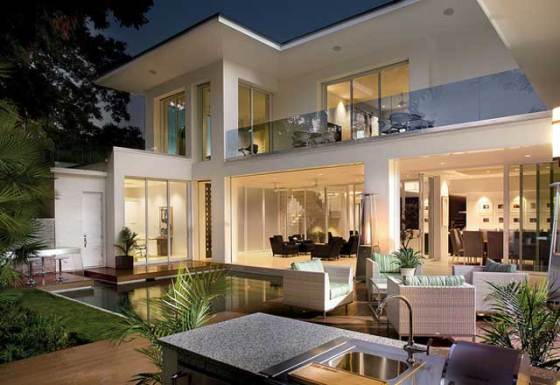
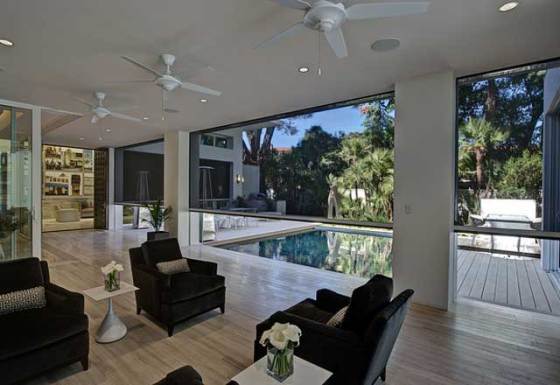
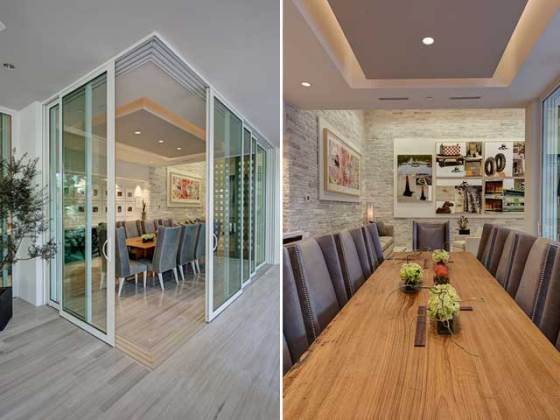
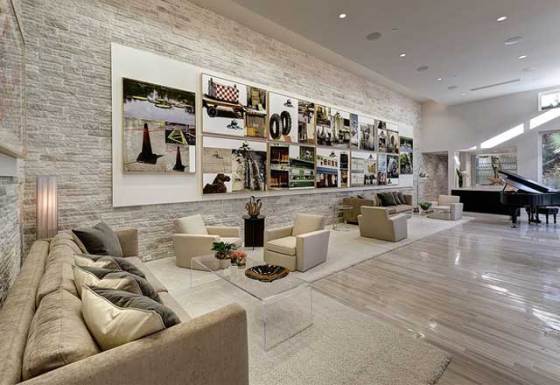
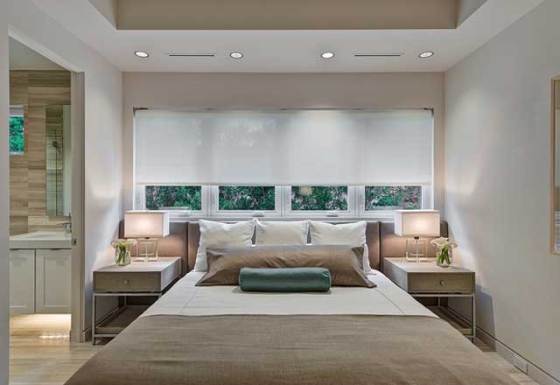
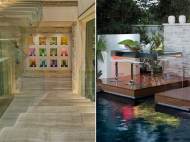
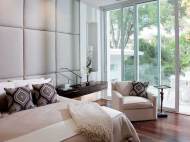
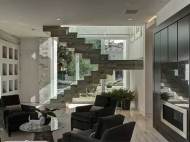
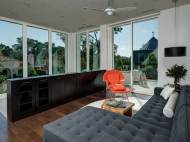
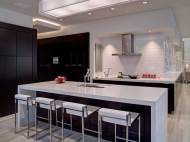
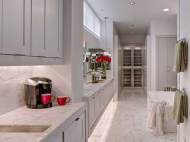








author
The home will be open to the public as a part of the Orlando Parade of Homes in April 2012.
For more photos, visit the International Builders’ Show’s 2012 New American Home photo set Flickr page.
Hey Damir – I work for an architecture firm here in Houston, TX. I love that this project takes a classic home design and reworks it for a modern look. There is so much that can be done in terms of designing for sustainability and this project is a good example of that.
Anyhow, thanks for sharing! – Aly
Is it possibly to have a plan house of this building